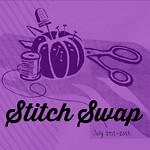Cute canvas tennis shoes have
been the latest craze the past two spring and summer seasons. There are a
variety of styles ranging from solid to pattern. Personally, I like to purchase
the solid colors because they can go with just about anything and can even add
a pop of color to a simple outfit. Eventually at the end of the shoes' life,
the color can start to fade or stain, or become boring. Instead of throwing
this pair of shoes away, you can upcycle them, giving them a fresh new look
reflecting your style or the latest trends. The design options are unlimited,
as you can use fabric pens, sequins, glitter, patterned shoelaces, or fabric
paint.
I have selected two different
designs to redesign my shoes. The first design is an ombre glitter design
because ever since I can remember, I've enjoyed sparkles, glitter, and shine
whether it is apparel or accessories. This design was really neat, but it
didn't work out how I originally planned, so I had to come up with my own
instructions. I also found some improvements for the next glitter pair I
make.
Supplies:
A Pair of old shoes, preferably white
Masking Tape
3 Containers of glitter in one shade from light to dark (See photo below)
1 Container of fabric paint (I used acrylic before and it made the shoe
stiff)
Newspapers
1 Paintbrush
Steps:
1) First take the laces out of the shoes to make it
easier to paint. You will need place masking tape to cover the rubber soles to avoid getting paint on them. It will also allow you to make a straight line if needed. Lay your newspapers down, as this project is very messy.
2) Next section your shoe off to see where each
color of glitter will start and end. In order to create an ombre effect, I
started with the lightest color at the back of the shoe (from the heel to just
before the tongue of the shoe), the medium shade in the middle, and the darkest
color on the front (the toe and bottom of the laces). You want your colors to
run together, so it looks transitional.
3) Starting
at the back of the shoe, paint the section with white fabric paint. You want to
make sure the area is covered pretty well, as this acts like the glue for the
glitter. When I did my first pair of shoes, I used acrylic paint and tried to
mix the glitter with the paint to paint it on. This resulted in a disaster
because the glitter clumped, so I resulted to the paint and shake method.
4) Take the lightest color of glitter and shake it
over the painted area. More is better to ensure you have maximum coverage.
Shake off the excess. Repeat the paint and shake process with the other two
glitter colors.
5) Let Dry Overnight. I placed some Modge Podge sealer on, which added
shine and helped seal some of the glitter, but it made my shoes kind of stiff.
6) Once they have dried completely, remove the masking tape, put your new
shoelaces in and they are ready to wear.
Put your new shoes on and wait for the compliments
to roll in! You have a one-of-a-kind shoe, be prepared for some of the glitter
to fall off. My glitter fell off at my crease lines, so I plan on adding more
glitter in these areas. You know what they say “She who leaves a trail of
glitter is never forgotten.” ;)

















.jpeg)


























